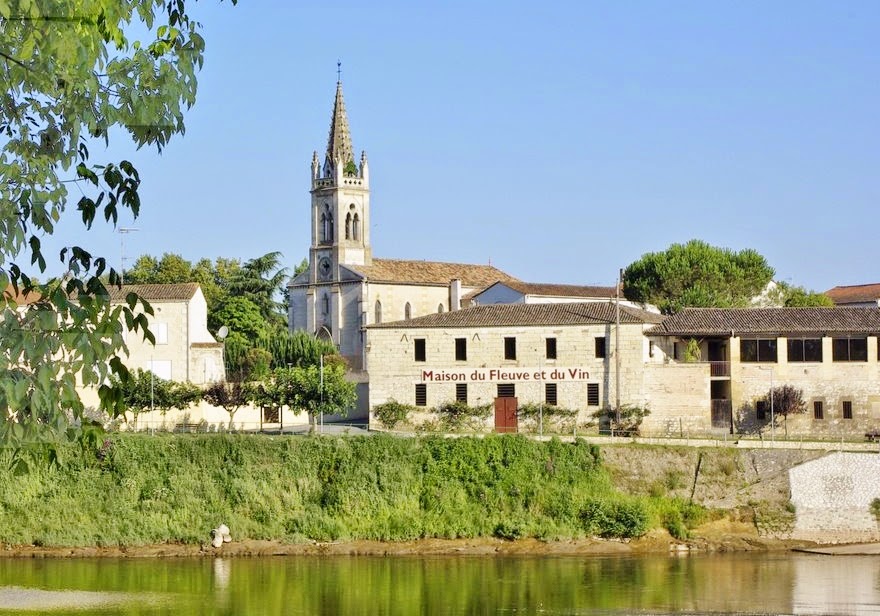Recently we had a
“friend of a friend” from Australia stay with us for a night and they
reciprocated by inviting us to spend a night or two with them at their rental
accommodation in Najac, France. Najac is in the Quercy region of France and is
quite different from our part of the country, so we decided to take a couple of
days off and take up their kind offer.
Antique shop in Cahors |
As we had not seen a
lot of this part of the country we decided to drive via a few well known towns
on our way to Najac. The entire trip was a 456 km round trip that took us
through 6 different Departments in France – Dordogne/Gironde/Lot/Tarn et
Garonne/Aveyron/Tarn and each Department has its own special appeal.
Our first stop for
lunch was Cahors, which is the capital of the Lot Department and set on a U-bend
in the Lot River. It was first established by the Celts over
2000 years ago, but now shows predominantly its medieval charm. A very pleasant
city of around 25,000 population and it is easy to walk around the “old town”
and take in some of the charm.
One of the famous
sights of Cahors is the Valentré Bridge which
was built as a fortified bridge during the 14th Century and is
referred to by legend as one of the Devil’s
bridges. The legend has it that the builder of the bridge could not fully
complete the bridge as it kept falling away at the last leg. In order to
succeed, he made a pact with the Devil so that the bridge could be completed.
To appease the devil a small devil like creature was built into one of the three
towers of the bridge (see photos below)
The Valentré Bridge with devil
Cahors is also well
known for its black heavy wine which
is generally 100% Malbec in variety. These days the wine is not as heavy or as
dark as it used to be but it is one of the very few regions in Europe that
basically use the malbec variety of grape in such a high concentration.
After lunching in
Cahors, we then drove through pretty towns such as Villefranche-de-Rouergue and
onto Najac for the night. We had read a little about Najac as it is
classed as one of the Plus Beaux
Villages of France. Indeed it more than met our expectations as it is a
long narrow medieval bastide, built around 1253 that stretches all the way
along the ridge line overlooking the river valley below. At one end of the
village is an old ruined chateau and church that stands out on the horizon for
many miles. We expected a smaller town, but while it is narrow, it just kept
on going. This village is very popular with tourists during the peak spring and
summer season and can be very crowded.
After spending the
night at Najac, in the morning we visited nearby smaller towns such as Varen and
Lagoupié before a quick
visit to the wonderful hilltop bastide of Cordes-sur-Ciel. Cordes is also
well worth a visit, but it takes a reasonable climb to access the town.
The journey home took
us through other wonderful places including Figeac
which is a pleasant town of around 12,000 population nestled on the river
Célé and very peaceful. Our journey was originally going to take us to Rocamadour and Sarlat but hat will wait for another trip. Instead we detoured via Domme another hilltop bastide
overlooking the Dordogne River and very much a tourist focussed centre. There
are a number of art and souvenir type establishments, but also a couple of very
good restaurants.
On the final legs home
we passed through Beynac et Cazenac, which is the home of the
Chateau Beynac on a hill overlooking the river and a short distance away the
neighbouring Chateau de Castelnaud. During the 100 years’ war, Beynac was a
chateau loyal to the King of France, while Castelnaud was loyal to the English
who had a long history in the Aquitaine region.
 |
| Cordes sur Ciel |
The village of Domme |
Well it may have seen
like forever, but after a matter of 8 months since our application, we have now
received our French Permis de Conduire
or our Drivers’ Licence. The dilemma
appears to have been caused by the lack of action by the French Embassy in
Australia chasing up the local authorities to ensure that our Oz licences were
valid and had no disqualifications. In the end, we had to do all of the liaison
work with the RTA and have them send our records directly to the Prefecture in
the Dordogne and even that was not straight forward. Clearly not everyone wants
to help.
Further good news
arrived last week when we were informed that our application to renew our
Residency status (originally by Visa) has been approved and after 1 June we can
collect our new Carte de Sejour or residency cards. This allows us a further 12
months residency at which time we will need to renew again. After 5 years, we
can apply for permanent residency and citizenship, which will give us the much
needed EU passport (we will then be dual passport holders). Our next adventure
will be our first Tax Returns in France, which are currently being completed
for us. Fingers crossed!!!!.
We are both comfortable
that it will all fall into place.
À bientôt





